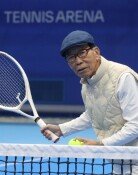N. Korea's youth becomes cynical of Kim's 'flood response show’
N. Korea's youth becomes cynical of Kim's 'flood response show’
Posted September. 06, 2024 08:25,
Updated September. 06, 2024 08:25
As South Korea faced torrential downpours in mid-July, its northern neighbor was also battered by record-breaking rainfall. North Korea experienced an unprecedented deluge, with some areas receiving over 400 millimeters of rain in a single day. The timing of these heavy rains was highly unusual, catching the North Korean authorities off guard and leading to a chaotic and inadequate response.
As the rains continued, the damage escalated. According to South Korean intelligence sources, the floods resulted in widespread destruction of homes, land, and, tragically, human lives. Yet, despite the mounting disaster, North Korean authorities remained conspicuously silent. State-run media avoided any mention of the floods, raising suspicions about the regime's motives. One South Korean official speculated that Kim Jong Un, facing widespread discontent due to food shortages and economic struggles, might have wanted to hide the flood's devastation from the public to avoid further unrest.
The situation worsened in the following days, with around 600 millimeters of rain pounding areas, including North Pyongan and Jagang provinces. The damage became impossible to ignore as the floods transitioned from a distant concern to a personal crisis for many North Koreans. Observers began to predict that the regime's efforts to suppress information and maintain control would not hold for long.
Attention soon turned to Kim Jong Un, the Supreme Leader, as many wondered when he would appear and how he would address the situation. As always, speculation leaned towards a "two-track" approach: Kim positioned himself as a heroic figure offering solace to the suffering population while simultaneously scapegoating and punishing certain officials.
Finally, at the end of July, the North Korean leader made an appearance. North Korean media extensively covered his visit to areas near the Yalu River, where he was shown directing rescue operations. The reports even included unfiltered images of the large SUV he was in, with all four wheels submerged in floodwaters. But that wasn't all. Dozens of photos showing Kim inspecting the flood-stricken areas were released in just one day. He was depicted traveling by helicopter, private train, and even on a lifeboat, which, according to the North Korean state media, was “dangerously rocking back and forth as if it might capsize at any moment," as he moved across land, sea, and air to rescue North Korean citizens.
Meanwhile, Kim harshly criticized and purged officials deemed responsible for the disaster. The first to go included the Social Security minister and the party secretaries of North Pyongan and Jagang provinces. As the death toll from the floods rose, so did the severity of Kim's retribution. Recently, intelligence reports have even indicated that some officials may have been executed.
This pattern is nothing new for Kim Jong Un. In every crisis, he has always found ways to glorify his image while sacrificing others. This was the case during the COVID-19 pandemic and the massive food shortages.
However, while Kim remains unchanged, the North Korean people's reaction appears to be shifting. According to one South Korean official, there is a growing cynicism among North Koreans towards Kim's exaggerated "stage performances." Many, especially the younger generation, who are more informed about the outside world through marketplaces and other means, are increasingly skeptical of the regime's traditional crisis management tactics.
Kim’s visit to flood-hit areas in a luxury vehicle and reports of his lavish yacht spotted off the coast of his Wonsan villa are stark contrasts that have not gone unnoticed by the public. North Koreans are now more aware than ever of the contradictions in their leader’s actions. The day when these murmurs of discontent grow into a chorus of open dissent may be the day the Kim Jong Un regime faces its first real test.







